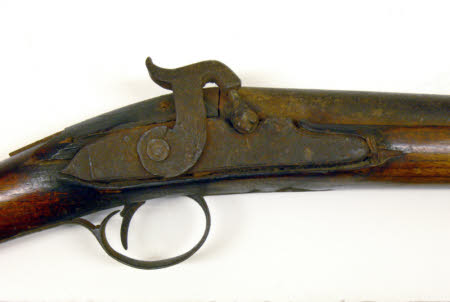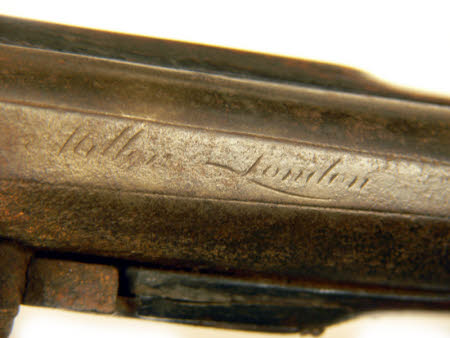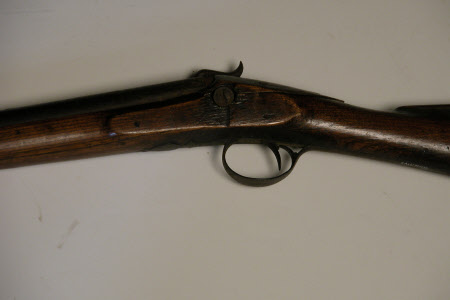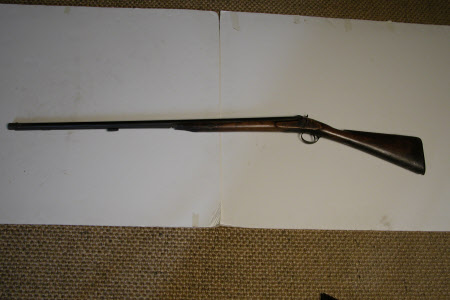Percussion gun
Richard Homer (c.1740-1770)
Category
Arms and armour
Date
1830 - 1840
Materials
Wood, iron
Measurements
1310 mm (L); 19 mm (Calibre)
Place of origin
London
Order this imageCollection
Canons Ashby, Northamptonshire
NT 494725
Summary
Sporting gun, originally a flintlock, converted to the percussion system, circa 1830-40. The barrel bears the mark of Richard Wilson, gunmaker, London 1747 - 1808.
Full description
Sporting gun, originally a flintlock, converted to the percussion system, circa 1830-40. The barrel bears the mark of Richard Wilson, gunmaker, London 1747 - 1808, together with an indecipherable makers signature and the word, London. The lock is engraved with the signature R. Homer (probably Richard Homer, gunlock maker, Bilston, Staffs, c1740 – 1770). Round iron barrel with flattened breech top signed with an indistinct makers mark together with the word LONDON. Also stamped the the makers mark RW under a star (Richard Wilson) The barrel with brazed-on under- rib and 2 ramrod pipes (1 missing). The barrel retained to stock by 1 barrel slide. Converted to percussion system by drum and nipple method. Barrel length 91cm Calibre 19mm. Wooden full stock. Engraved steel furniture comprising; butt-plate and trigger guard (with pineapple shaped finial). The ramrod missing. Percussion lock, converted from flintlock, the flat plate with stepped tail and engraved with a makers name (indecipherable). The hammer of crude form and rivetted to the tumbler square. Retained to the stock by 1 side-nail. Overall length 131cm
Provenance
Date of entry 1990 - provenance unknown
Marks and inscriptions
y
Makers and roles
Richard Homer (c.1740-1770), maker Richard Wilson (1747 - 1808), gunsmith
References
Bailey & Nye, 1978: DeWitt Bailey & Douglas Nye, English Gunmakers: Birmingham & Provincial Gun Trade




